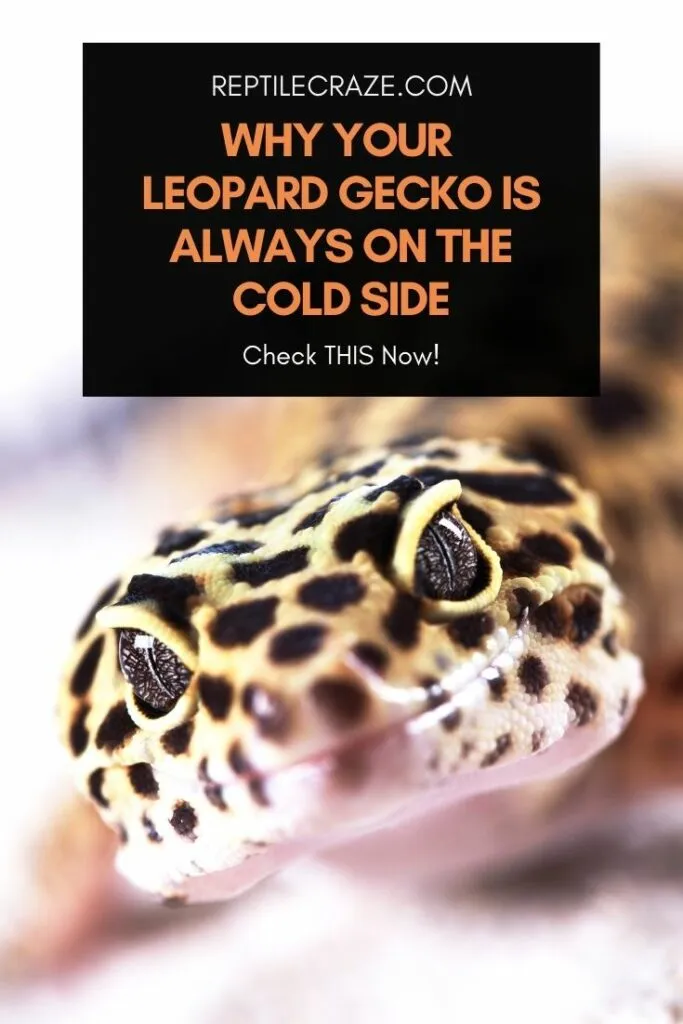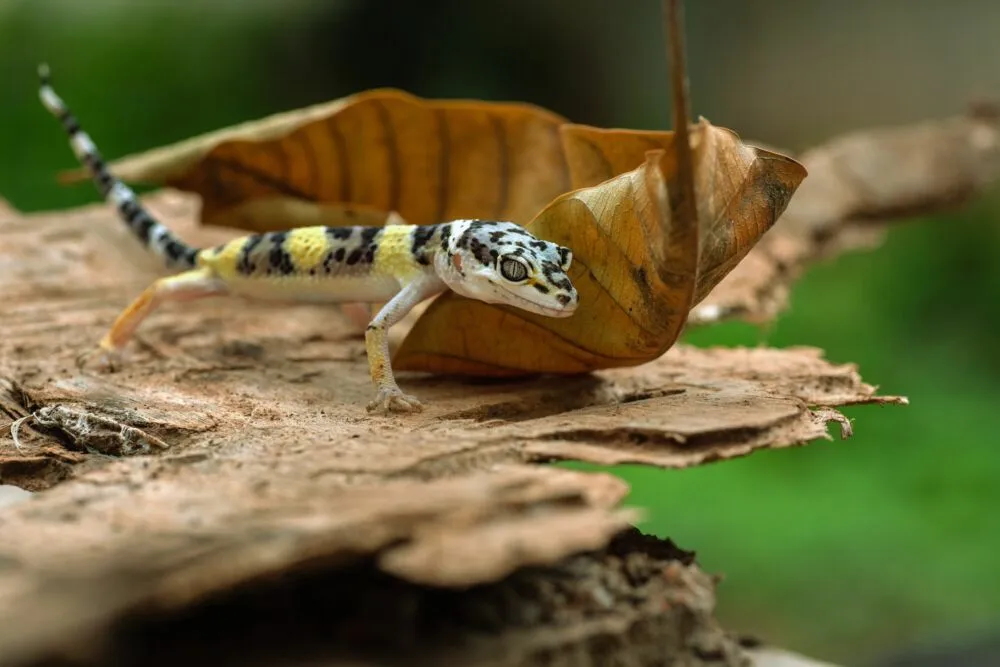
Looking after your leopard gecko can be tricky if it’s your first reptile, or it does something out of the ordinary – like only staying on the cold side of their
Leopard geckos stay on the cool side of their
In this article, we’ll give you the major reasons your leopard gecko may keep to the cool side of the
Table of Contents
The Main Reason a Leopard Gecko Stays on the Cold Side of the Tank
If you don’t measure your leopard gecko tank’s temperature, the
This is also why having a temperature gradient in the
The Correct Temperature Gradient Guide For a Leopard Gecko Tank
To give your leopard gecko a
| Leopard Gecko Temperature Gradient | Basking Spot | Warm Side – Day | Cool Side – Day | Night |
| Minimum Temperature | 91°F/32°C | 85°F/29°C | 75°F/23°C | 65°F/18°C |
| Maximum Temperature | 104°F/40°C | 90°F/32°C | 80°F/26°C | 74°F/23°C |
How To Keep a Leopard Gecko Tank At the Correct Temperature
To keep your leopard gecko’s
- A UVA/UVB lamp
- A thermometer
- A
tank that is set up correctly, with the correct temperature gradient
All of these work together to give your leopard gecko the best environment to thrive in.
A UVA/UVB and Ceramic Heat Lamp
Important! You should never put your leopard gecko’s
tank in the sun as this can cause thetank to overheat very quickly (just think about a car interior on a hot day and how uncomfortable and even deadly that gets). Rather, use the specially designed bulbs for your leopard gecko.
It’s very important that your leopard gecko have a source of UVB light as this is what helps them to produce vitamin D and utilize the calcium that you feed them. Without the necessary calcium they can get metabolic bone disease – which is as horrible and awful as the name suggests.
If your leopard gecko doesn’t have enough heat, though, they won’t be able to physically function properly. For instance, if they’re too cold they won’t be able to digest their
Preventing this from happening, however, is more difficult than simply putting any old lamp on the

You need to use a proper ceramic lamp and you need to position it high enough above the
To measure the temperature inside the
A Thermometer
Now, we don’t mean you should use the kind of thermometer you use to check whether you have a fever. Rather, you need to use a thermometer that’s been specifically created for use in reptile tanks.
You can use this thermometer throughout the day and night to ensure that the temperature of the
A Heat Mat
To ensure that the
Note! You must switch off the heat mat during the day to keep the
tank from getting too hot.
How To Cool Down a Leopard Gecko Tank That’s Too Hot
The fastest way to (safely) cool down a leopard gecko
Just ensure that the room isn’t freezing when you do this, i.e. don’t try this in midwinter without having some kind of heating switched on in the room first.
If you need to bundle up just to be in the room, the room is too cold and you risk lowering the temperature inside the
Then, keep a close eye on the
Note: Taking your leopard gecko out of the
tank to cool it down could lower their body temperature too quickly. Rather wait for the temperature inside thetank to stabilize and remain at the correct temperature for around half an hour before handling your gecko (if you need to handle them at all at this time).
What To Do If Your Leopard Gecko Dislikes Their Warm Hide Or Basking Spot
If you find that the temperature gradient in your leopard gecko’s
The easiest thing to do if you think that this is what’s wrong, is to switch the warm hide with the cool hide and see whether they now go into the warm hide. If they do, eureka! Now you just need two of the same types of hides…
It may also be that the hide and basking spot are difficult to get to and your leopard gecko must basically do acrobatics to get to them. Try to rearrange the cage’s accessories and see what happens.
- BTW: If your leopard gecko is always on the WARM side. You should read this article!
Tip: It may also be that you only have a basking spot in the warm side of the
tank and not a hide as well. If this is the case, simply add a hide to the warm side of thetank as well.
How To Choose the Best Hides For Leopard Geckos
When you pick out a hide for your leopard gecko ensure that:
- The hide is big enough to fit a fully-grown leopard gecko (you don’t want them feeling cramped or – worse – have them get stuck,
- The hide is easy to clean and disinfect without getting damaged,
- The hide is made from a non-toxic material,
- If the hide is made from wood you’ve sourced yourself, make sure that it’s been prepared correctly to rid it of any pests and pesticides.
How To Tell If Your Leopard Gecko is Starting Brumation
Finally, your leopard gecko may be staying in the cooler hide or on the cooler side of the
- Seem more lethargic or sleepy – but is alert when handled
- Eat less or not eat at all
- Sleep more – especially during the day or dusk when they are usually most active.
Note: Not all leopard geckos in captivity will brumate like those in the wild. If you find that your leopard gecko doesn’t brumate, you need to ensure that they’re still warm enough (and not too warm) throughout winter.
Conclusion
Although it can be very worrying when your leopard gecko doesn’t want to go to the warm side of the
By going through the reasons why your leopard gecko is acting the way it does, you’ll most likely find that it’s nothing much to worry about. However, if you’re still worried – and these steps don’t work, rather get your gecko to the vet for an overall checkup.
- Enchi Ball Python: A Unique and Stunning Morph of Python regius - March 27, 2025
- Emerald Tree Monitor: The Enigmatic Green Guardian of the Rainforest - March 26, 2025
- The Egyptian Cobra (Naja haje): A Fascinating Serpent - March 25, 2025
